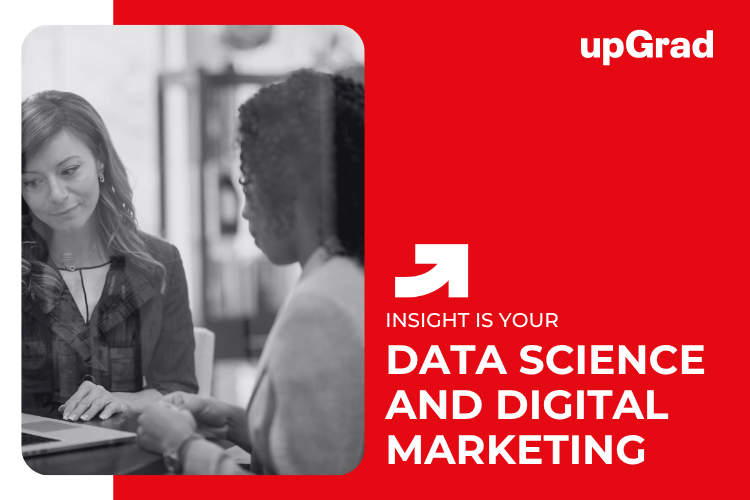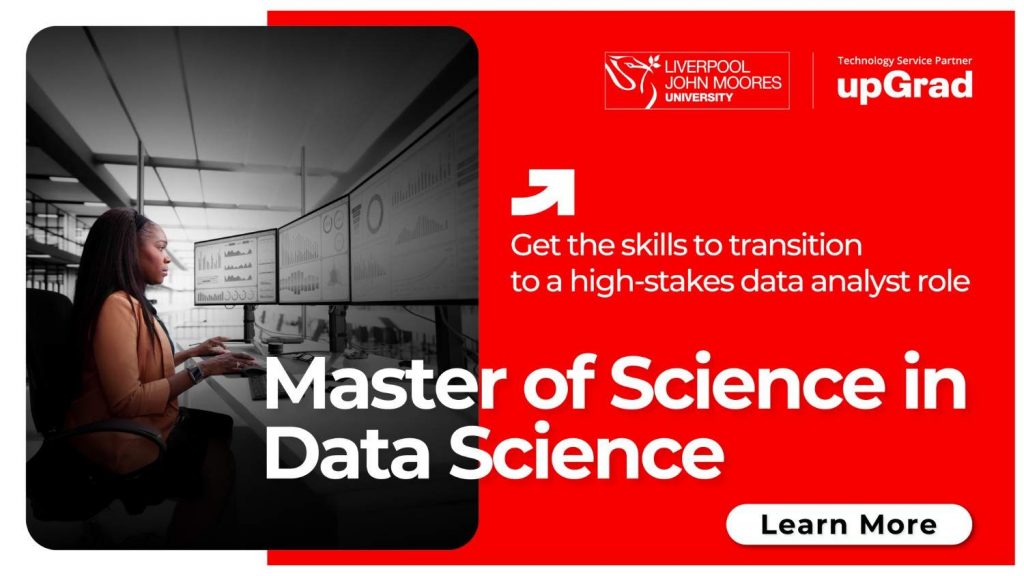The intersection of digital marketing and data science is a powerful one that can profoundly shape the future of online marketing. Data science combines skills from computer science, mathematics, statistics, and programming to make sense of large datasets. When combined with marketing principles and practices, this data helps marketers to identify key trends in customer behavior, measure campaign performance, and inform decisions about how best to engage customers.
64% of marketers report that data-driven strategies are vital in today’s economy
As digital marketers continue to seek more effective ways to reach their target audience and create compelling experiences for them, understanding how these two disciplines intersect is essential for a successful strategy. In this article, we will look at 6 ways data science and digital marketing come together.
We’ll discuss the importance of data-driven marketing, explore how marketers can use data science to optimize their campaigns and content and look at some tips for getting started.
Sentiment Analysis
Sentiment analysis is a key area in which data science and digital marketing intersect. This technique involves natural language processing (NLP) to identify the sentiment behind customer feedback or comments. According to Bain & Company, analyzing customer sentiment from their reviews is expected to exceed 80% in 2023.
Marketers can understand how customers perceive their products or services by analyzing customer reviews. Sentiment analysis helps marketers gain valuable insights into customer’s needs and preferences, allowing them to create more targeted campaigns that address those needs more effectively. It also allows marketers to respond quickly to negative comments and take action if necessary.
How does it work?
The process begins with collecting customer feedback (such as reviews, comments, ratings) and then using NLP technology to analyze the sentiment of each comment. This could involve labeling each piece of feedback as either positive or negative. Once the marketers have labelled the comments, they can use this data to identify key trends in customer sentiment and adjust their marketing strategies accordingly.
Example:
Let’s say a company is launching a new product and wants to understand how customers are responding. They can use sentiment analysis to assess customer reviews of the product and gain valuable insights into what people like or dislike about it. This could help them identify areas for improvement, create more targeted campaigns, and ultimately improve the customer experience.
Search Engine Optimization
Search engine optimization (SEO) is another area in which data science and digital marketing intersect. SEO involves optimizing content for specific search terms so that it appears higher in search rankings. Marketers use data-driven methods such as keyword research to determine which keywords are most relevant to their target audience and optimize their content accordingly. They can also use data to identify which keywords have the potential to generate the most traffic and conversions.
How does it work?
Data science plays a key role in SEO because it helps marketers better understand their target audience and create optimized content for their needs. By understanding how people search for information online, marketers are able to craft content that meets their users’ expectations and subsequently increases their chances of ranking higher on SERPs. As such, data science can be used to inform SEO strategies and tactics, leading to improved visibility and better results.
Example:
Let’s say a brand wants to optimize its blog posts for “online marketing trends” but isn’t sure what types of content would perform best. Using data science, they could analyze the search behavior of people looking for information on this topic and determine which keywords are most popular. This information would help them identify which topics to focus on when creating content and adjust their strategy accordingly.
Recommendation Systems
Recommendation systems are another area in which data science and digital marketing intersect. This type of system considers user behavior and uses data to provide personalized recommendations based on those behaviors. Marketers can use these systems to identify products or services that their customers may be interested in, allowing them to create more targeted campaigns and boost sales.
How does it work?
The process begins with collecting data about customer behavior, such as what they have purchased or viewed in the past. The next step is using machine learning algorithms to analyze this data and identify patterns that indicate a customer’s preferences. Finally, the system uses these patterns to generate personalized product recommendations for each individual customer. These systems have revolutionized the way marketers reach out to customers and can lead to improved customer engagement and higher conversion rates. By targeting their campaigns more effectively, marketers can save time and money while still reaching the right people with the right message.
Example:
The easiest example to understand this concept is your OTT platforms. Netflix, Amazon Prime, HBO Max, Hulu, etc., use this technology to show you what they think you’ll like based on your previous viewing habits. They also create personalized recommendations for each viewer so that everyone gets a unique set of suggestions tailored to their individual tastes.
Customer Churn Prediction
Customer churn prediction involves analyzing user data to identify patterns indicating when a customer will likely stop using a product or service. By understanding why customers are leaving, marketers can create targeted campaigns to retain these customers and improve their overall satisfaction with the brand.
How does it work?
The first step of this process is gathering data from customers, such as their purchase history, demographic information, and engagement metrics. Next, machine learning algorithms are used to analyze this data and identify factors that are associated with customer churn. Finally, the system uses these insights to generate personalized recommendations for each individual customer on how they can reduce the likelihood of them leaving.
Example:
To understand this concept better, let’s look at an example. For instance, a mobile phone company may be able to identify from user data that customers who have been with the service for over four years and have used more than 500 minutes of talk time are likely to remain loyal. This information can then be used to create campaigns targeting these customers in order to encourage them to stay with the service and reduce their likelihood of churning.
Market Basket Analysis
Market basket analysis is a data science technique for analyzing frequently co-purchased products. It can assist marketers in recognizing complementary product pairs and defining which ones are more likely to drive sales. Retailers can benefit from the insights gained from this analysis by optimizing store layout and encouraging customers to purchase more items per shopping trip.
How does it work?
Historical purchase data is first collected, including the products customers have bought together. Then, machine learning algorithms are used to analyze the data and identify patterns of items being purchased together. Finally, this information is used to create targeted campaigns for customers who are likely to purchase certain combinations of products.
Overall, market basket analysis is an important tool for marketers as it allows them to understand customer behavior better and tailor their strategies accordingly. By using this data science technique, marketers can improve their campaigns and increase their chances of success.
Example:
For example, let’s say a grocery store notices from its purchase data that when customers buy apples, they also tend to buy bananas and oranges. The store can then use this information to create campaigns targeting customers likely to purchase all three products to increase their chances of making a sale.
Customer Segmentation
Customer segmentation is a data science technique for dividing customers into homogeneous groups based on shared characteristics. It provides marketers with insights on effectively targeting different customer segments and creating more personalized messaging that resonates better with each group.
How does it work?
The first step is collecting customer data, such as age, gender, location, buying habits, and income level. Next, you should use machine learning algorithms to analyze this data and identify similarities between customers. This allows the system to group customers together who share certain characteristics and form meaningful segments. Finally, marketers can use these insights to tailor their campaigns to the needs of each individual segment in order to increase their chances of success.
Example:
For instance, a clothing store might be able to identify from its customer data that customers aged 18-25 prefer bright colors and flashy designs, while customers over 50 prefer more subtle colors and simpler styles. This information can then create campaigns targeting each age group with the appropriate messaging to make the most impact.
Conclusion
Data science and digital marketing are two powerful tools that complement each other perfectly. The techniques discussed in this article alone, such as market basket analysis and customer segmentation, can help marketers better understand customer behavior and create more personalized campaigns to increase their chances of success.
However, it is important to note that data science is never a substitute for creativity or intuition when crafting a successful campaign. Data science can provide insights and help you making informed decisions but, don’t rely on them completely. Marketers need to keep their finger on current trends and use technology strategically to stay ahead of the competition.
Ultimately, the key takeaway from this article is that data science can be incredibly useful for digital marketers when used correctly. By combining the powers of data science and digital marketing, marketers can gain greater insights into customer behavior and create more effective campaigns that increase their ROI.
With the right approach, data science and digital marketing can be powerful allies for any marketer’s success.









